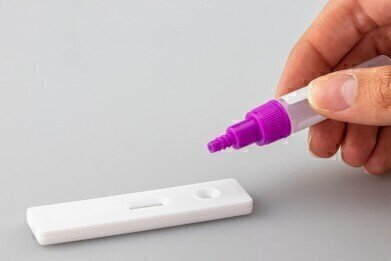Water/Wastewater
Is Wastewater Epidemiology Used for COVID-19?
Oct 31 2021
Wastewater-based epidemiology, or WBE, is a technique used to determine the levels of a specific bacteria, chemical or other substance in a local population. It is achieved by analysing samples taken from the sewage of the population in question and can be effective in quantifying the prevalence of infections, viruses and diseases, among other uses.
Although the practice has been favoured by the scientific community for decades, it has gained greater fame in recent times due to its increasingly important role in COVID-19 surveillance. Because those infected with the disease can shed fragments of its DNA into their faeces before they even experience symptoms, it can serve as an effective “leading indicator” of viral activity. Here are three specific applications of the “leading indicator” theory, as posited in an academic paper published earlier this year.
Early warning system
The first application of WBE to COVID-19 surveillance is as an early warning indication system. Since WBE does not rely on individuals coming forward for testing, it means that it can detect the presence of the virus prior to anyone contracting symptoms or submitting voluntarily to a somewhat invasive lateral flow or PCR test.
This non-discriminatory nature of WBE means that it is capable of monitoring a far greater segment of the population than individual testing allows. Crucially, it also has a lead time of up to six days before symptoms manifest themselves, allowing the authorities to divert crucial resources to areas likely to become hotspots of infection, thus preventing further spread.
Quantification of ongoing activity
Another important use of WBE in determining COVID-19 infection rates is as a more holistic diagnosis tool. Rather than just relying on it to give advance warning of the disease’s movements, it can be used to track its activity over a larger portion of the population. Although this is not as accurate a portrayal as that delivered by individual diagnostics, it does offer several advantages.
For starters, a sizable proportion of coronavirus sufferers do not suffer symptoms. As such, they are less likely to seek out a test to determine whether or not they have contracted the disease, meaning an unknown proportion of cases are going undiagnosed. This proportion is augmented by those who are unable or unwilling to take a test. As such, WBE provides an alternative method of tracking COVID-19’s spread among a local populace.
Outbreak detection against background of ongoing activity
The third proposed application of WBE is something of a combination of the previous two. Especially pertinent in the light of large-scale events, it can be used to determine whether a one-off incident has a noticeable bearing on infection rates among the local population, prior to any spikes or bursts of activity being caught by individual testing.
For example, there are suggestions that the European Championships football tournament, which was held at venues in London and Glasgow (among several other locations), could be responsible for a rise in COVID-19 infections this summer. WBE can provide supplementary evidence for those kinds of scenarios, expanding our knowledge of the disease’s behaviour as we try to open up society, understand the environmental implications of coronavirus and return to a semblance of normality.
Digital Edition
IET 34.2 March 2024
April 2024
Gas Detection - Biogas batch fermentation system for laboratory use with automatic gas analysis in real time Water/Wastewater - Upcycling sensors for sustainable nature management - Prist...
View all digital editions
Events
Apr 30 2024 Melbourne, Australia
Apr 30 2024 Birmingham, UK
May 03 2024 Seoul, South Korea
May 05 2024 Seville, Spain
May 06 2024 Minneapolis, MN, USA


















